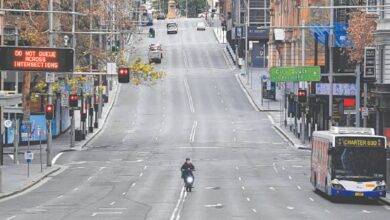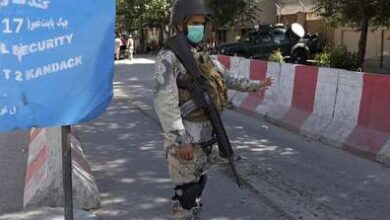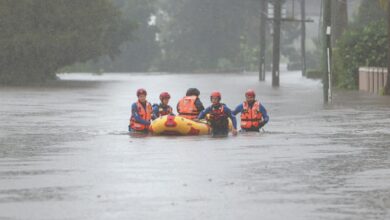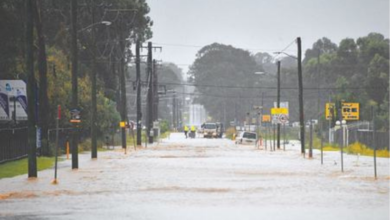New Zealand police open a criminal probe into deaths on volcanic island
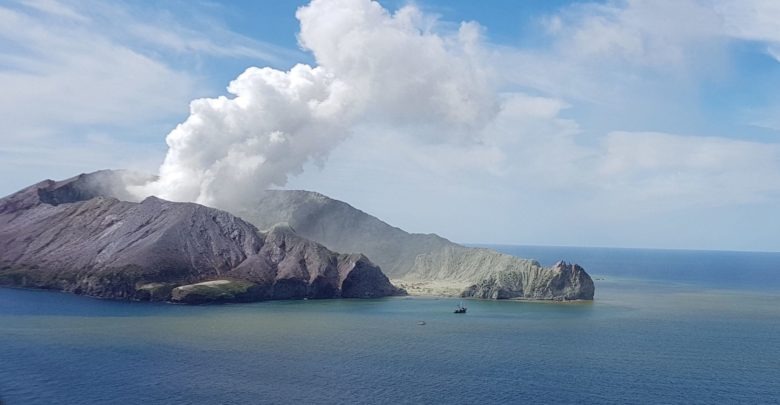
New Zealand police said on Tuesday they were opening a criminal investigation into the deaths of tourists on a volcanic island where a powerful eruption of ash and scalding steam occurred as dozens of people were exploring the barren landscape.
Five deaths were confirmed after Monday’s eruption of the White Island volcano. Eight other people are feared dead, but unstable conditions on the island were continuing to hinder a search.
Police Deputy Commissioner John Tims did not go into details of the criminal investigation but said it would sit alongside an investigation by health and safety regulators. The announcement indicates authorities are concerned safety standards may have been breached.
Many people are questioning why tourists were still allowed on the island after seismic monitoring experts raised the volcano’s alert level last month.
“These questions must be asked and they must be answered,” Prime Minister Jacinda Ardern said in Parliament.
About 47 people were on the island at the time of the eruption, and some of those evacuated suffered critical burns.
“To those who have lost or are missing family and friends, we share in your grief and sorrow, and we are devastated,” Ardern said.
Experts said they thought there was still a 50 per cent chance of another small eruption taking place within the next day, making it too dangerous for search teams to return to the island.
Ardern said aircrafts have not seen survivors, and Tims said attempts to send up drones were prevented by windy conditions.
The eruption on Monday sent a plume of steam and ash an estimated 3,660 metres into the air. Helicopter crews landed afterward despite the danger and evacuated many survivors. One of the rescue boats that returned from the island was covered with ash half a metre thick, Ardern said.
Russell Clark, an intensive care paramedic worker, said the scene looked like the Chernobyl nuclear disaster, just blanketed in ash.
“It was quite an overwhelming feeling. There was a helicopter on the island that had obviously been there at the time, with its rotor blades off it,” Clark told New Zealand broadcaster TVNZ. “I can only imagine what it was like for the people there at the time they had nowhere to go.
“We didnt find any survivors on the island,” Clark said. “It would’ve been quite traumatic for them.
Many of the visitors on the island at the time were Australian, and Ardern said New Zealanders and tourists from the United States, China, Britain and Malaysia were also affected. Some of the visitors were passengers from the Royal Caribbean cruise ship Ovation of the Seas.
Australian Prime Minister Scott Morrison said 11 Australians are unaccounted for and 13 were hospitalised.
“Three Australians were suspected to be among the initial five confirmed dead,” he told reporters in Sydney. “I fear there is worse news to come,” Morrison said.
Relatives of a newlywed American couple say the husband and wife were severely burned. Barbara Barham told The Washington Post that her daughter Lauren Urey, 32, and son-in-law Matthew Urey, 36, from Richmond, Virginia, were on a honeymoon trip.
A few locals laid flowers on Tuesday at a fence on the waterfront near where the rescue boats had returned with the injured, many of whom were flown to burn units at hospitals around New Zealand.
White Island, also known by the indigenous Maori name Whakaari, is the tip of an undersea volcano some 50 kilometres off New Zealand’s main North Island.
New Zealand’s GeoNet seismic monitoring agency had raised the volcano’s alert level on Nov 18 from 1 to 2 on a scale where 5 represents a major eruption, noting an increase in sulfur dioxide gas, which originates from magma. It also said volcanic tremors had increased from weak to moderate strength. It raised the alert level to 4 for a time after Monday’s eruption but lowered it to 3 as the activity subsided.
Richard Arculus, an Australian National University volcanologist who has made numerous visits to White Island, said the eruption likely sent a ground-hugging lateral blast from the crater to the jetty, as well as blasting rock and ash vertically skyward.
“In that crater, it would have been a terrible place to be,” Arculus said. “There would have been nowhere safe for you to be hiding, thinking that: Oh well, if it explodes, it just goes straight up in the air.”
White Island is New Zealand’s most active cone volcano. About 70pc of the volcano lies under the sea.
Twelve people were killed on the island in 1914 when it was being mined for sulfur. Part of a crater wall collapsed and a landslide destroyed the miners’ village and the mine itself.
The remains of buildings from another mining enterprise in the 1920s are now a tourist attraction. The island became a private scenic reserve in 1953, and daily tours allow more than 10,000 people to visit every year.

